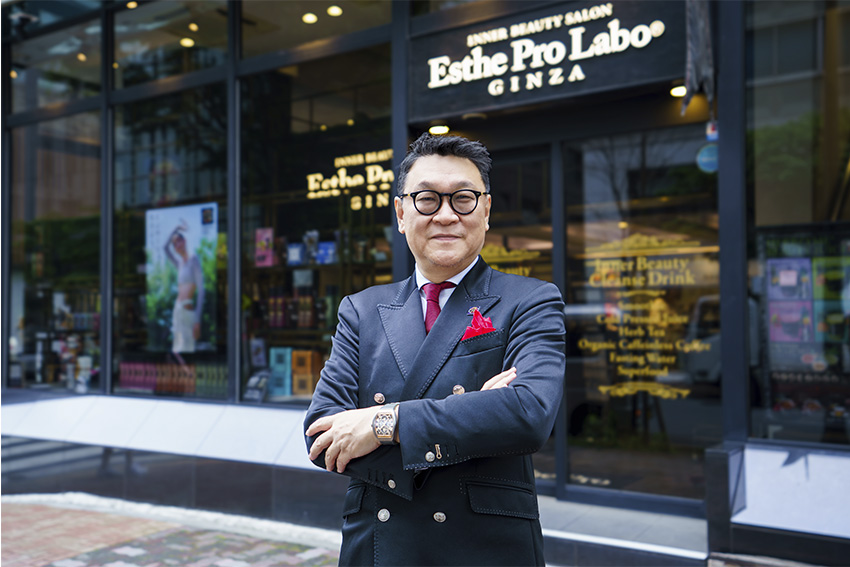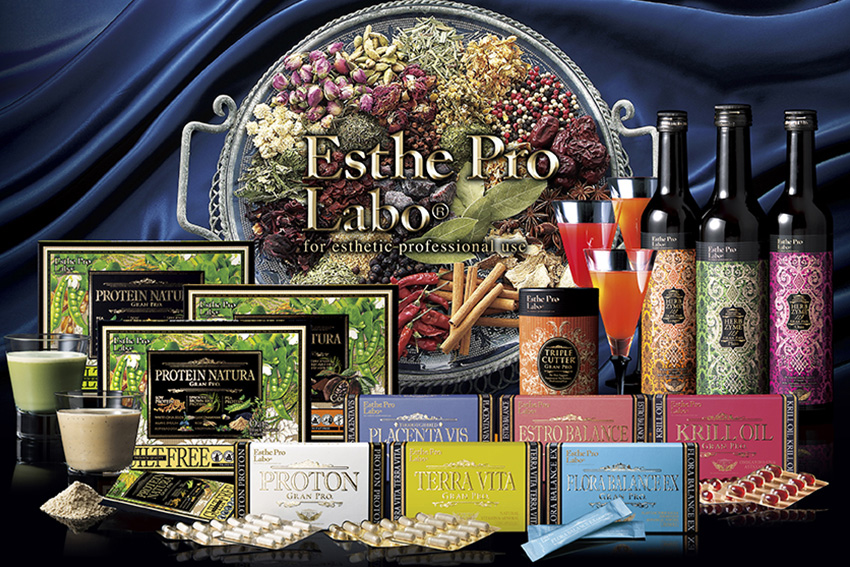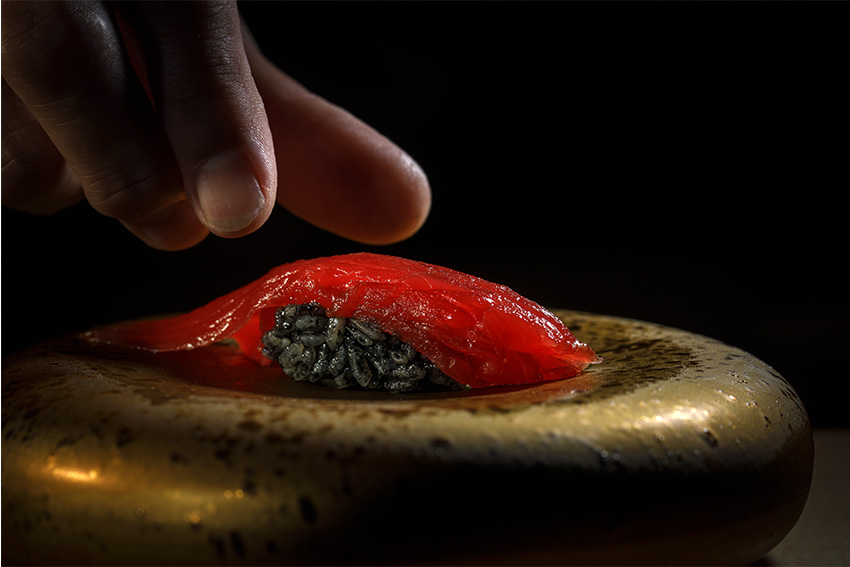Through authentic products for professional use, Pro Labo is proving that inner beauty is possible.

I would like to open with the growing risks that lifestyle and chronic diseases present today. If you talk to doctors, they’ll often tell you that three lifestyle choices impact the prevalence of chronic disease. The first is smoking and unhealthy habits, the second is diet, and the third is physical activity. Once upon a time, we used to say that these lifestyles and chronic diseases were western or affluent country problems as developing countries didn’t have the same exposure to these vices. These days, however, this has really become a global problem. According to the latest numbers by the World Health Organization (WHO), around 70% of premature deaths will come from these chronic diseases by 2030, creating one of the biggest lifestyle crises we’ve seen in ages. What steps must be taken, not to treat but to prevent those lifestyle diseases from happening, and how can companies such as yours, with those solutions, contribute to treating this global crisis?
In terms of how we perceive health, and this is not only for our company but is also talked about globally, there are three factors that contribute to health. First is diet, second is sleep, and third is physical exercise. These are said to be the really important pillars of health. Our business model is centered on improving food consumption and dietary habits, and we consider this to be the most important point for preventive medicine.
We advocate for improving these dietary habits, and when we do so, we emphasize what we call in-out beauty. What we mean by this is that we should take in only what is good for the intestines, and if we take in something that is bad for the intestines, we should expel it. We emphasize what should go into the intestines through the food.
We have a hypothesis on why these kinds of lifestyle diseases are increasing across the globe right now. First, it’s about people eating too much, so there’s a surplus of calories going into people’s intestines. Second, modern people are consuming a lot of food additives, pesticides, and harmful metals, and these are a burden on the intestines, which relates to our in-out concept. Third, there is a failure in digestion, which relates to eating too much and consuming harmful things. Modern people are eating a lot of animal-based ingredients and it takes a lot of energy to digest those, so it’s common that you can’t digest everything and harmful substances are absorbed into the body. So those are the factors we believe are contributing to the increasing cases of lifestyle diseases.

https://innerbeautysalon.jp/en/
Regarding our in-out concept, again it’s about taking in good things and pushing out bad things. Of course, there are many good things, but in terms of improving dietary habits, we believe that the best things are fermented foods. One of our mainstay products is an enzyme drink series that uses 113 types of vegetables, fruits, mushrooms, and seaweeds, which are naturally fermented in cypress barrels. We consider the second-best things to consume to be high-quality water and good oils. The third-best are vitamins, minerals, and coenzymes, which are important for other enzymes to work in the body. Finally, good proteins are also very important. That’s what we perceive as good substances.
On the other hand, there are so many bad substances. But to give some examples, I already mentioned additives and pesticides. Refined sugar, or white sugar as it’s called, is another one. Oxidative oils and gluten are also bad substances. These have become problems in Japan recently. Another bad substance is trans fatty acids, which are not regulated in Japan right now, and that’s a problem. With the Westernization of food in Japan, more and more people are consuming increased amounts of meat, which, as mentioned earlier, is difficult for the intestines to digest. This can lead to a deterioration of the intestinal environment, allowing these harmful substances to be absorbed, leading to what is referred to as leaky gut syndrome. Consequently, this can result in impurities in the blood and cells, which we believe contribute to lifestyle diseases.
Today, around the world, there’s a big movement towards improving one’s health. However, you still have the misperception that changing your dietary habits and forgoing some of these negative things means sacrificing the good things in life. It means sacrificing fun food or food that you’re going to like. How does your company, with initiatives such as Kuro-Shari restaurant, for example, overcome the misconception that a healthy diet means a less tasty one?
You’re right. When we say to people that you can’t do this and that, they perceive that they are making a sacrifice. I think this is a very normal way of thinking, so what we try to do is to keep talking about inner beauty. We focus on inner beauty because, ultimately, it manifests as outer beauty. The two are interconnected. Finding ways to enhance outer beauty through inner beauty should be exciting and enjoyable. That’s the motivation we aim to promote. To achieve beauty, it's crucial to start with selecting good food. Current research also emphasizes the connection between the brain and the intestines, highlighting that serotonin, a mood-regulating hormone, originates from the gut and the intestines. A cleaner gut and intestines can thus improve not only outer appearance but also mental well-being and mood. This is the message we aim to convey: it's not about sacrifice but rather excitement.
When you talk about the concepts of prevention and inner beauty, I think that’s linked to the situation that Japan is in right now. It is the oldest society in the world, and it is estimated that in the upcoming years, 30% of the population will be over the age of 65. Of course, it’s not the only country facing that situation. China, South Korea, and many European countries, including Germany and Italy, are also starting to become super-aged societies. What we’re seeing in these economies is that healthcare costs are skyrocketing, and a lot of governments are now moving from a treatment model to a prevention model. How can this inner beauty concept help to create a more preventive healthcare model, and what are the challenges and opportunities that operating in an aging society presents for your company?
We believe that the main cause of lifestyle diseases is dietary habits. I have already mentioned in-out beauty, but in Japan, there is a phrase called shoku gen byo, which means that all diseases come from the source of food. Currently, medical costs have increased to JPY 50 trillion in Japan, putting pressure on the financial foundation. How we can contribute lies in us being the leading company in Japan in the field of inner beauty. By expanding our efforts to improve dietary habits, we can create a virtuous cycle in society. Improved dietary habits lead to fewer diseases, thereby reducing the burden on medical costs. This is the cycle we are confident we can contribute to.
Your firm has expanded its activities, taking this concept of inner beauty and pushing its limits. You began first by providing products such as Herb Tea, Herb Zyme 113 Gran Pro series, and your Fast Pro Water, all of which are best-selling products. After establishing those products, you branched out into having your own salons and clinics. We also saw that you expanded to sustainable farming that can be distributed directly to consumers and you have even created your own beauty devices. Could you explain the rationale for that business diversification and also discuss the synergies that you’re able to create between these disparate yet related businesses?
We currently have ten businesses, all centered around our pursuit of inner beauty. As part of this pursuit, we engage closely with our customers, providing guidance and consultations on improving dietary habits and about what should and shouldn’t be taken into the body. Responding to their inquiries about vegetable selection and more, we established Pro Labo Farm in Ishikawa in 2019 to cultivate our own safe and reliable vegetables.

We also have our inner beauty restaurant business aimed at educating people about inner beauty through food. The reason we opened Kuro-Shari, our first inner beauty restaurant, was due to the prevalence of sushi restaurants serving sushi with white sugar, which raises blood sugar levels. Additionally, we operate an inner beauty meat restaurant called Niku-Shari, a shabu-shabu restaurant named Kin-Shari that emphasizes the health benefits of mushrooms for bacterial and intestinal health, and an inner beauty café known as Pro Labo CAFÉ.
Additionally, raw fish can potentially contain mercury, so we aimed to offer representative Japanese cuisine—sushi—in a safer way. This led to the concept of Kuro-Shari restaurant, where we use coconut shell-activated charcoal to bind with mercury and prevent its absorption by the body. We also avoid using any additives or refined sugars. Our goal is to deliver the message of inner beauty to a global audience that enjoys food.
What I find interesting about your Kuro-Shari restaurant is how it also serves as an information point. Since inner beauty is a relatively new concept, there’s a need to inform the public about its importance, but also medical practitioners, who are often quite conservative. Considering that you’ve created the Inner Beauty Medical Foundation (IBMF), how important is it for you to inform medical practitioners and the public about the advantages of inner beauty and how do you go about it?
Let me explain a bit of the background behind the establishment of the Inner Beauty Medical Foundation (IBMF). My interest in inner beauty began when I was diagnosed with diabetes 17 or 18 years ago, at the age of 34. Initially, I assumed that doctors and medical practitioners would possess extensive knowledge in this area, particularly regarding dietary treatment and nutrition science. However, I discovered that this was not the case, and that’s why I started to study it myself. I read books authored by university professors and doctors who were researching this field and sought out meetings with them to further my understanding. I just thought that there needed to be a platform for people to study this because there were not many people who knew about it, so that’s why, before the foundation, I set up the predecessor organization in 2014.
It all began because only a few doctors and medical practitioners knew about this, and I felt there needed to be a platform to study the links between health, food, and inner beauty. Recognizing the importance of education in this field, I have observed that while Japan has nutritionists knowledgeable in nutrition science, they may not have expertise in areas such as gut health, intestines, or mitochondria. This realization led me to conclude that we needed a comprehensive study platform. That was in 2014 when I set it up, which was a big step.
By strengthening our company brand, expanding our presence, and enhancing recognition, we aim to amplify the dissemination of this message. I want more people to receive the qualifications that IBMF offers. While we have already issued diplomas to over 10,000 people, our goal is to reach more beauty and health professionals, including aesthetic clinic professionals, therapists, and acupuncturists. We seek to equip these professionals with qualifications to help spread the message. More and more influential figures in Japan are becoming aware of this health concept, and we want models, actors, and professional athletes to come to the foundation and get these qualifications so that they can become pillars in spreading this message.
I’d like to talk a little about the international market. As of May 2022, your company has expanded to 18 countries and regions around the world, including a big presence in Asia in places such as Hong Kong and Taiwan and also in the United States and the North American markets. Can you run us through your international strategy, and what markets do you believe will be key to your international growth?
In terms of our global strategy, I must admit it poses challenges. However, as you mentioned, our products are distributed worldwide, with China leading, followed by Vietnam, and interestingly, the Czech Republic is third. We also have a presence in other parts of Asia and also in North America, but the number of distributed products is less compared to the top three countries. And I think it’s a difficult task for us to educate people about inner beauty. It’s not just about how people can get the products; education is also important. Establishing ourselves in a country through education is ideal, but it presents a significant challenge for us. For us, the key lies not only in entering markets but also in education—educating people not only about our products but also our background and philosophy. It’s about improving dietary habits and having people really understand nutritional science and intestinal bacteriology as well. We need people in each country to really understand those concepts. It will not go well if people just like the design or have good opinions about Japanese products. It’s deeper than that, so the key is education plus branding in order to expand our company.
Your company has a series of international partnerships, for example in the Czech Republic you have a concept shop in Prague and a collaboration with the luxury salon at the Andaz Prague. Are you looking to replicate these types of partnerships in other overseas markets, and if so, what type of partners do you believe would be the next step to grow your international strategy?
At the end of April, we had a big inner beauty event in the Czech Republic, hosted by our local partner company. The owner of the partner company is a remarkable businesswoman who owns numerous aesthetic salons across the Czech Republic and is very passionate about inner beauty and understands it. She’s also a big fan of Esthe Pro Labo. Hosting the event, she attracted 100 people from the media and 500 people participated online, so it was really big for us. Renowned fashion magazines like Vogue and Elle interviewed us, and even Forbes Magazine covered our story. The event highlighted our pioneering role as the first Japanese company focused on intestinal health and inner beauty in the Czech Republic, generating substantial attention and positive feedback. This achievement was made possible through our partnership. However, each country presents unique cultures, regulations, and societal norms, necessitating tailored marketing approaches. Partnerships are a great way for us to enter other countries, and we place great emphasis on partnerships with individuals who grasp the concept of inner beauty and share our vision. So we continually strive to identify and collaborate with such like-minded partners.
We have an office in South Korea, where we cover the medical aesthetics sector. The big trend currently occurring in the South Korean market is a cross between devices and treatments and quasi-drugs and diets, in the sense that now medical aesthetic doctors not only recommend a treatment but also a lifestyle to accompany it. How do your products synergize with medical aesthetic salons, and have you developed products that are particularly targeted at certain combinations of treatments?
It was about 2007 when we started pitching inner beauty to aesthetic salons, gradually expanding to over 26,000 stores using our products today. Before that, Japanese aesthetic salons were taking a technical, canned treatment approach. But we believe that true beauty requires more than superficial methods; it necessitates an inner approach. Therefore, we have focused on developing and nurturing individuals who can counsel and advise consumers about food and dietary habits. That’s what we’ve been doing ever since then. I believe we can say that our company has developed because we offer products that complement the existing outer beauty treatments provided by aesthetic salons and clinics. We were able to provide the new concept of inner beauty. What we’ve been doing for aesthetic salons, clinics, and also sports gym facilities is providing them with this new inner beauty value. By incorporating this new value, they can better satisfy their customers. That’s how our business model has worked and succeeded. However, many other domains in the medical and beauty fields have yet to adopt this inner beauty concept, so we want to continue advocating for it so that it gets further disseminated.
I have a last personal question. If we were to return in 2032, which would be your company’s 30th anniversary, what goal or personal ambition would you like to achieve for the business by that anniversary?
We actually have a future vision in place, and we want to accomplish that by around 2032. We want to establish inner beauty counseling salons in the capitals of 30 countries. Through this vision we want to contribute to each country's preventive medicine efforts. To accomplish this, we first need to deepen the understanding of inner beauty among Japanese people. Currently, we have about 26 inner beauty salons nationwide in Japan, and we plan to increase this number to around 50 by 2032. Moreover, with the increasing number of tourists coming to Japan, we aim to leverage this opportunity to expand awareness of inner beauty. Simultaneously, we intend to promote awareness and acceptance of the inner beauty concept in 30 countries through ongoing educational efforts. These activities are designed to enhance health through food and hopefully reduce medical costs in each country. And we are sure that with these activities we can create a longer, more healthy life expectancy for people. These are all the goals we aim to achieve by 2032.
For more information, visit their website at: https://prolabo.co.jp/
0 COMMENTS